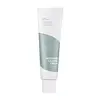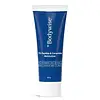What's inside
What's inside
 Key Ingredients
Key Ingredients

 Benefits
Benefits

 Ingredients Side-by-side
Ingredients Side-by-side

Water
Skin ConditioningArtemisia Princeps Extract
Skin ConditioningGlycerin
HumectantEthylhexyl Isononanoate
EmollientDipropylene Glycol
HumectantGlycyrrhiza Glabra Root Extract
BleachingPanthenol
Skin ConditioningArachidyl Alcohol
EmollientBehenyl Alcohol
EmollientArachidyl Glucoside
EmulsifyingGlucose
HumectantCetearyl Olivate
Sorbitan Olivate
EmulsifyingDipotassium Glycyrrhizate
HumectantAllantoin
Skin ConditioningTheobroma Cacao Seed Extract
AntioxidantCarbomer
Emulsion StabilisingXanthan Gum
EmulsifyingAmmonium Acryloyldimethyltaurate/Vp Copolymer
Disodium EDTA
Caprylyl Methicone
Skin ConditioningEthylhexylglycerin
Skin ConditioningTromethamine
BufferingGlycereth-26
HumectantBeta-Glucan
Skin Conditioning1,2-Hexanediol
Skin ConditioningCeramide AP
Skin ConditioningButylene Glycol
HumectantCaprylic/Capric Triglyceride
MaskingWater, Artemisia Princeps Extract, Glycerin, Ethylhexyl Isononanoate, Dipropylene Glycol, Glycyrrhiza Glabra Root Extract, Panthenol, Arachidyl Alcohol, Behenyl Alcohol, Arachidyl Glucoside, Glucose, Cetearyl Olivate, Sorbitan Olivate, Dipotassium Glycyrrhizate, Allantoin, Theobroma Cacao Seed Extract, Carbomer, Xanthan Gum, Ammonium Acryloyldimethyltaurate/Vp Copolymer, Disodium EDTA, Caprylyl Methicone, Ethylhexylglycerin, Tromethamine, Glycereth-26, Beta-Glucan, 1,2-Hexanediol, Ceramide AP, Butylene Glycol, Caprylic/Capric Triglyceride
Water
Skin ConditioningPropanediol
SolventEthoxydiglycol
HumectantDicaprylyl Carbonate
EmollientCaprylic/Capric Triglyceride
MaskingDimethicone
EmollientArachidyl Alcohol
EmollientBehenyl Alcohol
EmollientArachidyl Glucoside
EmulsifyingCopper Tripeptide-1
Skin ConditioningPanthenol
Skin ConditioningSodium Acrylates Copolymer
Lecithin
EmollientPhenoxyethanol
PreservativeEthylhexylglycerin
Skin ConditioningCeramide NP
Skin ConditioningCeramide AP
Skin ConditioningCeramide EOP
Skin ConditioningPhytosphingosine
Skin ConditioningCholesterol
EmollientSodium Lauroyl Lactylate
EmulsifyingCarbomer
Emulsion StabilisingXanthan Gum
EmulsifyingTocopheryl Acetate
AntioxidantAllantoin
Skin ConditioningHyaluronic Acid
HumectantDisodium EDTA
Water, Propanediol, Ethoxydiglycol, Dicaprylyl Carbonate, Caprylic/Capric Triglyceride, Dimethicone, Arachidyl Alcohol, Behenyl Alcohol, Arachidyl Glucoside, Copper Tripeptide-1, Panthenol, Sodium Acrylates Copolymer, Lecithin, Phenoxyethanol, Ethylhexylglycerin, Ceramide NP, Ceramide AP, Ceramide EOP, Phytosphingosine, Cholesterol, Sodium Lauroyl Lactylate, Carbomer, Xanthan Gum, Tocopheryl Acetate, Allantoin, Hyaluronic Acid, Disodium EDTA
 Reviews
Reviews

Ingredients Explained
These ingredients are found in both products.
Ingredients higher up in an ingredient list are typically present in a larger amount.
Allantoin is a soothing ingredient known for its protective and moisturizingg properties. Because of this, it is often added to products with strong active ingredients.
Studies show higher concentrations of this ingredient can promote wound healing.
Though it can be derived from the comfrey plant, allantoin is produced synthetically for cosmetic products to ensure purity.
Learn more about AllantoinArachidyl Alcohol is a fatty alcohol made from peanut oil. It is an emollient, emulsifier, and thickener.
You'll most likely find this ingredient as an emulsifier in water-based cosmetics.
We don't have a description for Arachidyl Glucoside yet.
Behenyl Alcohol is a type of fatty alcohol (these are different from the drying, solvent alcohols).
Fatty Alcohols have hydrating properties and are most often used as an emollient or to thicken a product. They are usually derived from natural fats and oils; behenyl alcohol is derived from the fats of vegetable oils.
Emollients help keep your skin soft and hydrated by creating a film that traps moisture in.
In 2000, Behenyl Alcohol was approved by the US as medicine to reduce the duration of cold sores.
Learn more about Behenyl AlcoholThis ingredient is an emollient, solvent, and texture enhancer. It is considered a skin-softener by helping the skin prevent moisture loss.
It helps thicken a product's formula and makes it easier to spread by dissolving clumping compounds.
Caprylic Triglyceride is made by combining glycerin with coconut oil, forming a clear liquid.
While there is an assumption Caprylic Triglyceride can clog pores due to it being derived from coconut oil, there is no research supporting this.
Learn more about Caprylic/Capric TriglycerideCarbomer is a polymer of acrylic acid. Its main role is to create a gel consistency.
A high amount of carbomer can cause pilling or balling up of products. Don't worry, most products contain 1% or less of carbomer.
Ceramide AP is formally known as Ceramide 6.
Ceramides are intercellular lipids naturally found in our skin that bonds dead skin cells together to create a barrier. Having a strong skin barrier leads to more firm and hydrated skin.
They are known for their ability to hold water and thus are a great ingredient for dry skin. By bolstering the skin ceramides act as a barrier against irritating ingredients. This can help with inflammation as well.
If you would like to eat ceramides, sweet potatoes contain a small amount.
Read more about other common types of ceramides here:
Ceramide NP
Ceramide EOP
Disodium EDTA plays a role in making products more stable by aiding other preservatives.
It is a chelating agent, meaning it neutralizes metal ions that may be found in a product.
Disodium EDTA is a salt of edetic acid and is found to be safe in cosmetic ingredients.
Learn more about Disodium EDTAEthylhexylglycerin (we can't pronounce this either) is commonly used as a preservative and skin softener. It is derived from glyceryl.
You might see Ethylhexylglycerin often paired with other preservatives such as phenoxyethanol. Ethylhexylglycerin has been found to increase the effectiveness of these other preservatives.
Panthenol is a common ingredient that helps hydrate and soothe the skin. It is found naturally in our skin and hair.
There are two forms of panthenol: D and L.
D-panthenol is also known as dexpanthenol. Most cosmetics use dexpanthenol or a mixture of D and L-panthenol.
Panthenol is famous due to its ability to go deeper into the skin's layers. Using this ingredient has numerous pros (and no cons):
Like hyaluronic acid, panthenol is a humectant. Humectants are able to bind and hold large amounts of water to keep skin hydrated.
This ingredient works well for wound healing. It works by increasing tissue in the wound and helps close open wounds.
Once oxidized, panthenol converts to pantothenic acid. Panthothenic acid is found in all living cells.
This ingredient is also referred to as pro-vitamin B5.
Learn more about PanthenolWater. It's the most common cosmetic ingredient of all. You'll usually see it at the top of ingredient lists, meaning that it makes up the largest part of the product.
So why is it so popular? Water most often acts as a solvent - this means that it helps dissolve other ingredients into the formulation.
You'll also recognize water as that liquid we all need to stay alive. If you see this, drink a glass of water. Stay hydrated!
Learn more about WaterXanthan gum is used as a stabilizer and thickener within cosmetic products. It helps give products a sticky, thick feeling - preventing them from being too runny.
On the technical side of things, xanthan gum is a polysaccharide - a combination consisting of multiple sugar molecules bonded together.
Xanthan gum is a pretty common and great ingredient. It is a natural, non-toxic, non-irritating ingredient that is also commonly used in food products.
Learn more about Xanthan Gum